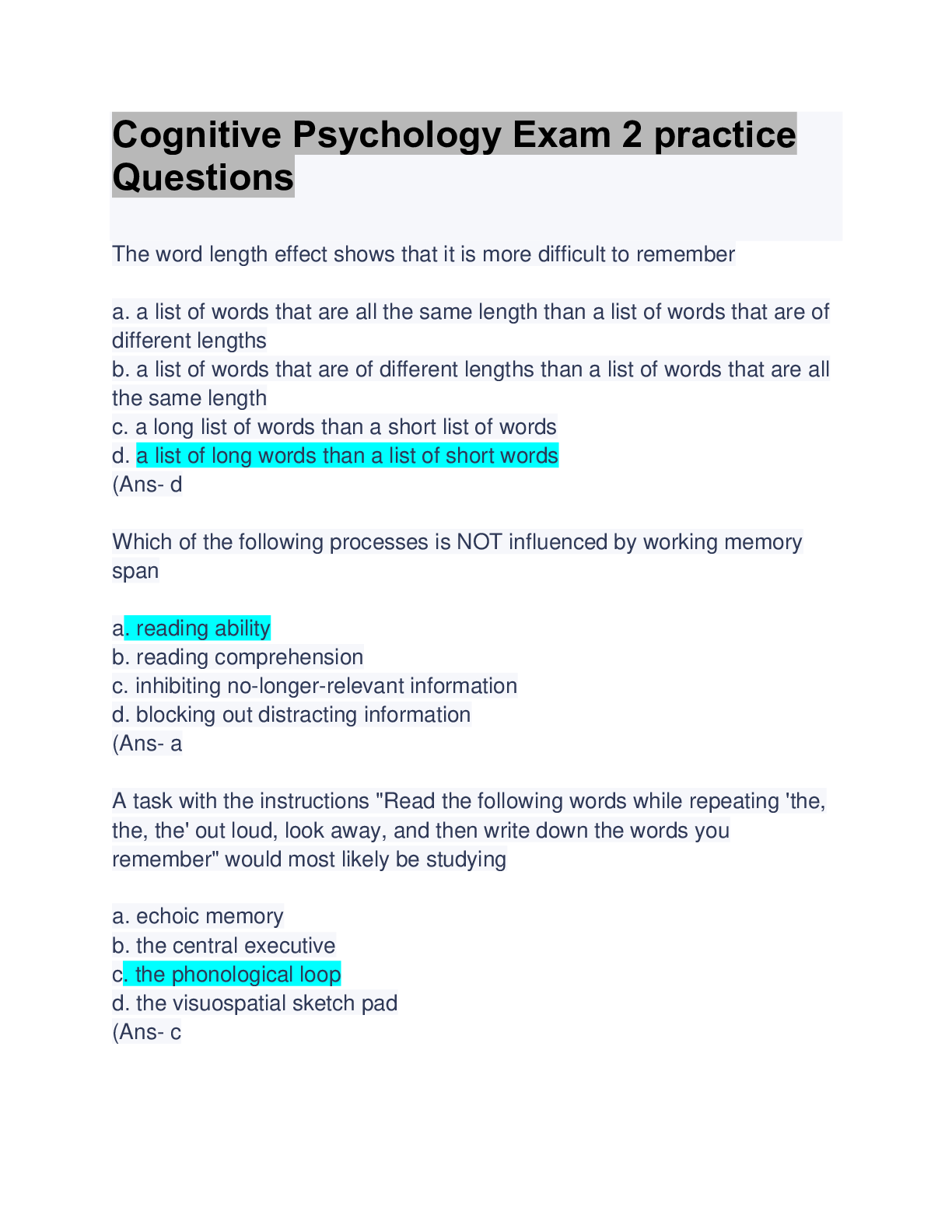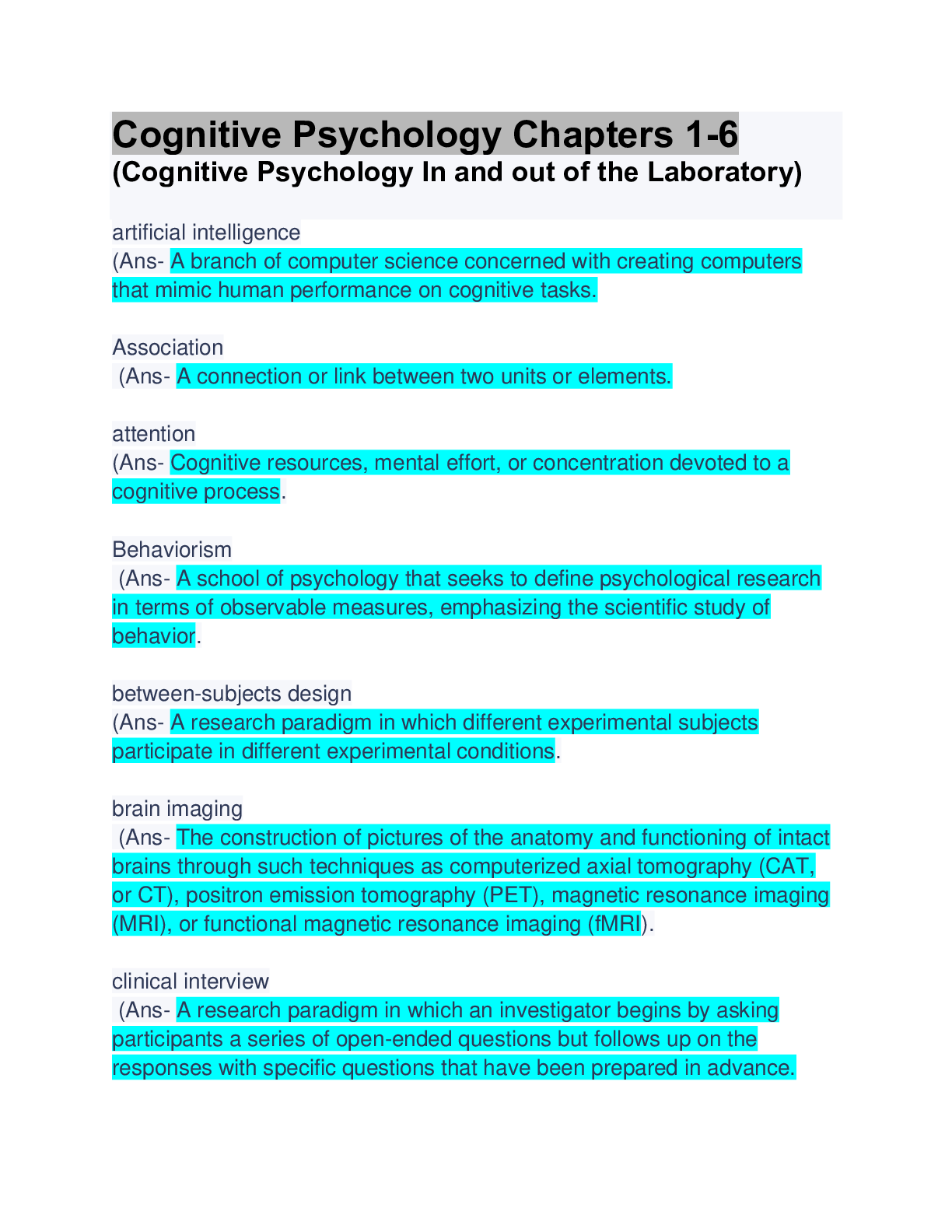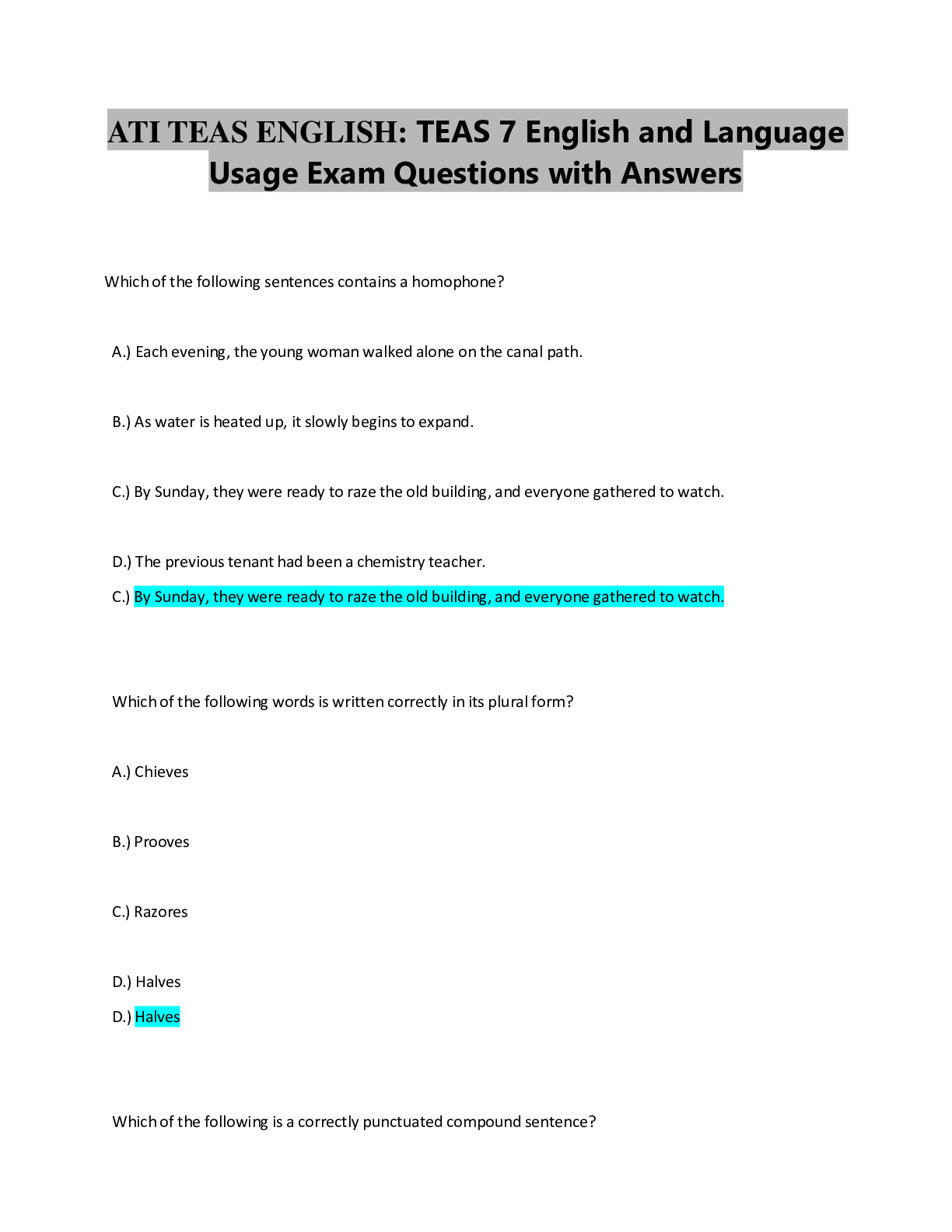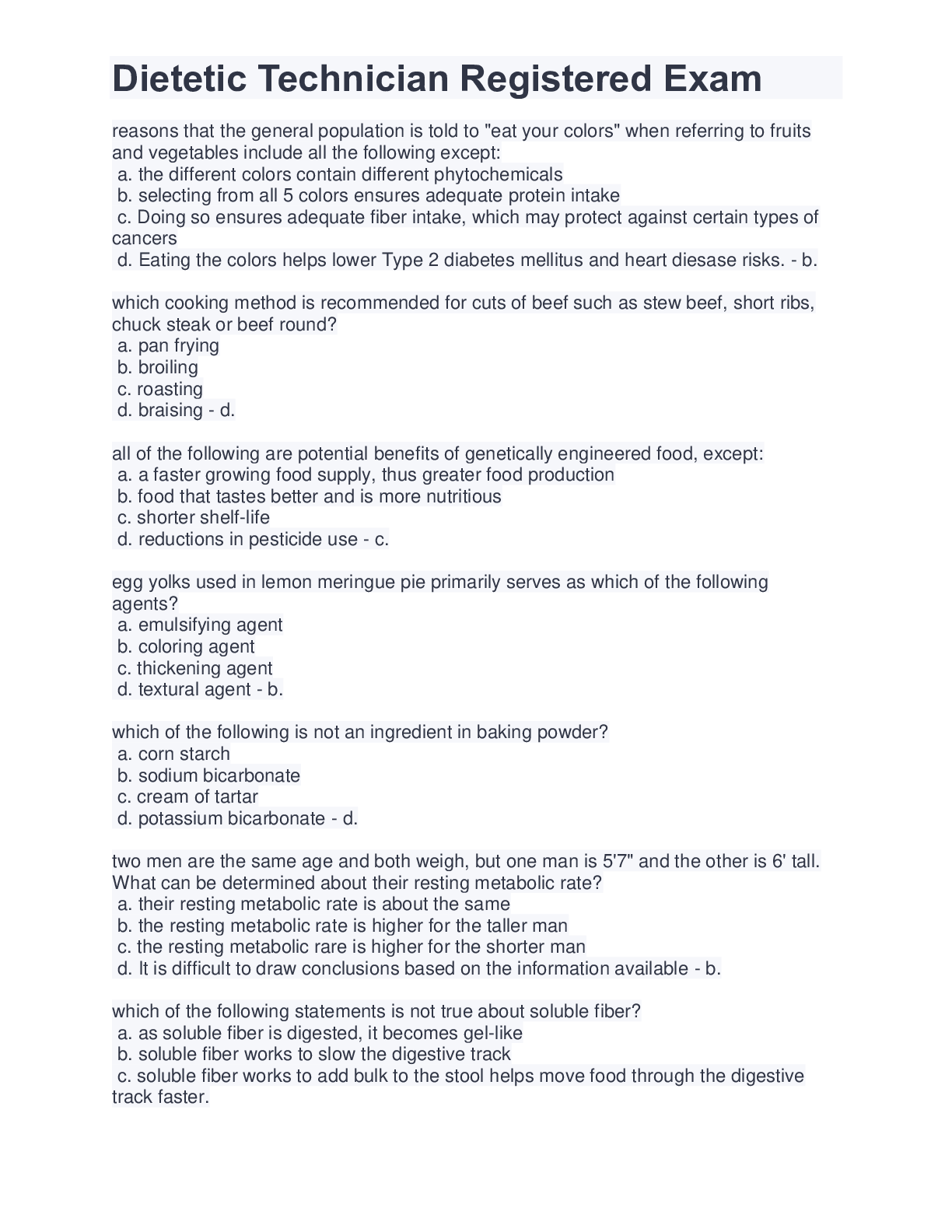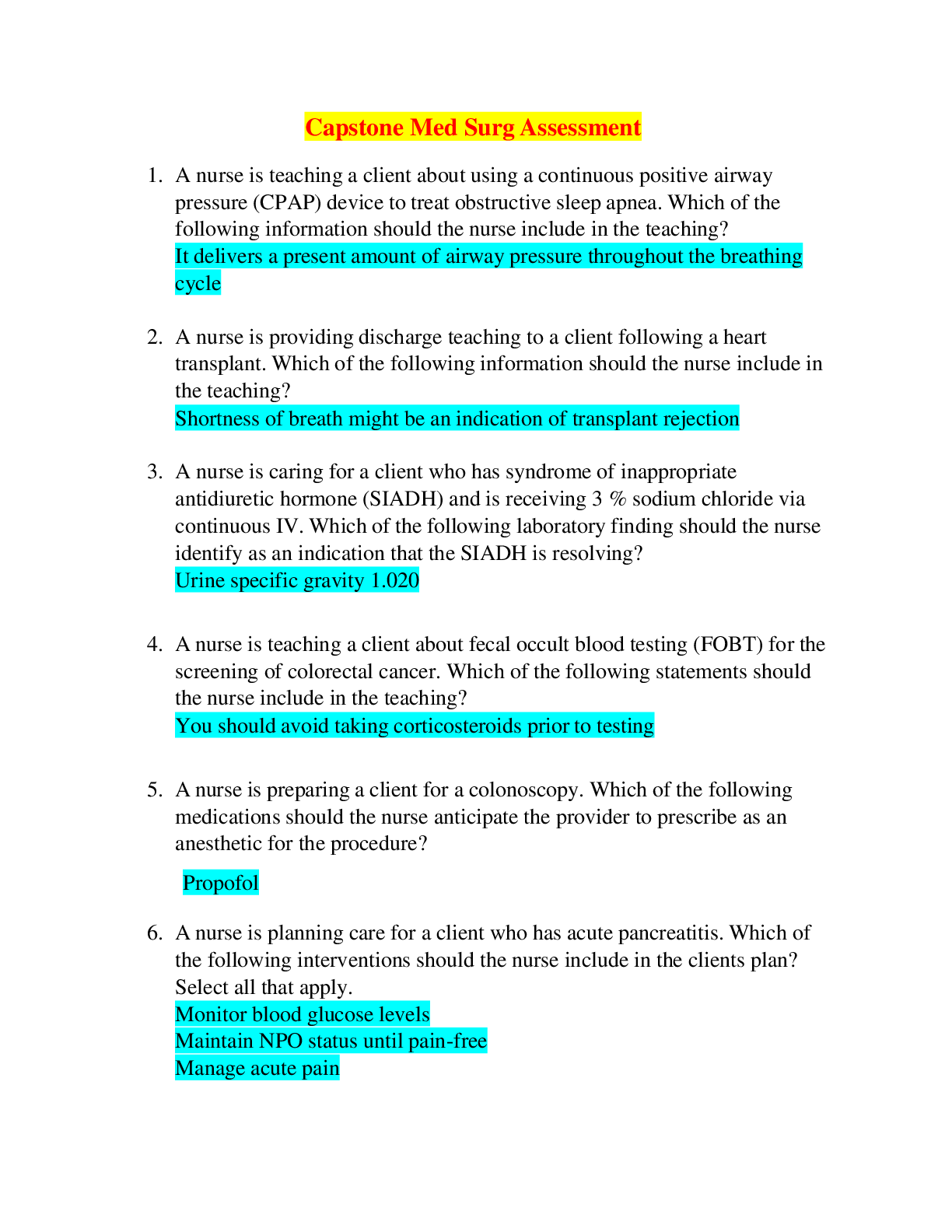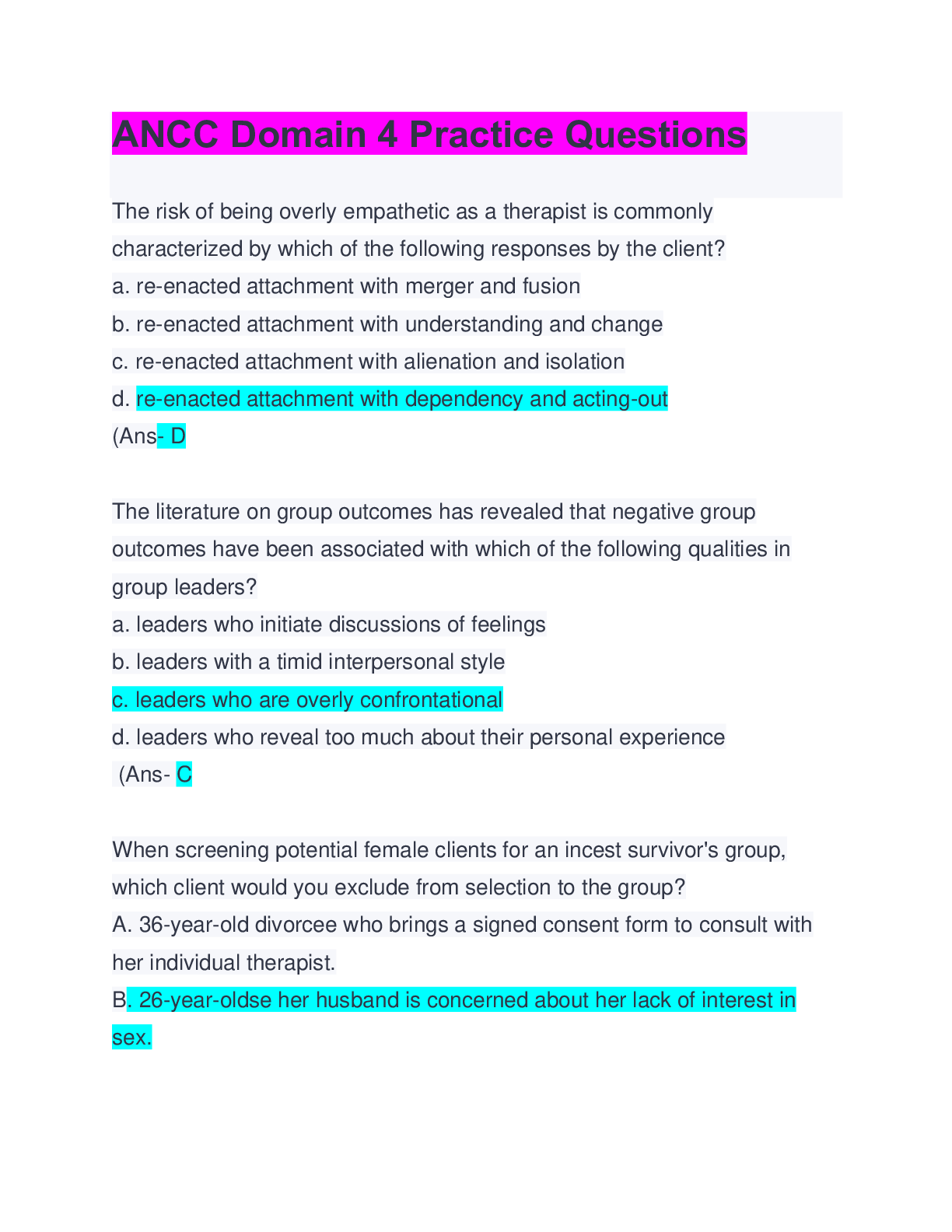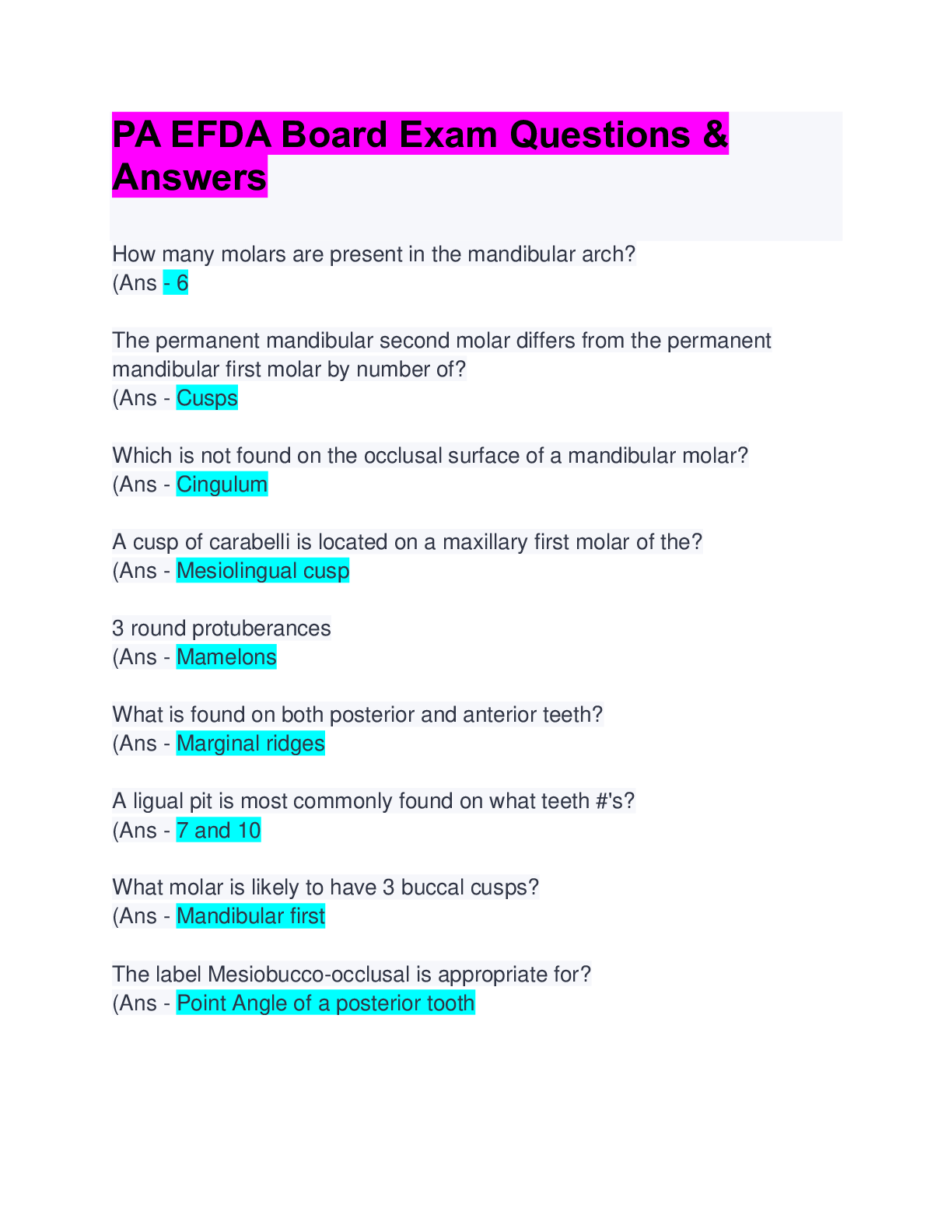Health Care > EXAM > ACLS Final Exam: Questions & Answers: With Rationales : Latest Updated A+ Solution (All)
ACLS Final Exam: Questions & Answers: With Rationales : Latest Updated A+ Solution
Document Content and Description Below
A patient experiences cardiac arrest, and the resuscitation team initiates ventilations using a bag-valve-mask (BVM) resuscitator. The development of which condition during the provision of care would... lead the team to suspect that improper BVM technique is being used? Hypertension Esophageal injury Pneumothorax Rib fracture (ANS- Pneumothorax Complications can occur with the use of a BVM resuscitator due to improper technique. Delivering excessive volume or ventilating too fast creates excessive pressure that can damage the airways, lungs and other organs. Excessive volume can lead to tension pneumothorax. A person suddenly collapses while sitting in the sunroom of a healthcare facility. A healthcare provider observes the event and hurries over to assess the situation. The healthcare provider performs which assessment first? Rapid assessment Basic life support assessment Secondary assessment Primary assessment (ANS- Rapid assessment A systematic approach to assessment is necessary. The healthcare provider should first perform a rapid assessment. A rapid assessment is a visual survey to ensure safety, form an initial impression about the patient's condition (including looking for life-threatening bleeding), and determine the need for additional resources. This would be followed by a primary assessment and then a secondary assessment. A patient is receiving ventilation support via bag-valve-mask (BVM) resuscitator. Capnography is established and a blood gas is obtained to evaluate the adequacy of the ventilations. Which arterial carbon dioxide (PaCO2) value signifies adequate ventilations? 10 to 15 mmHg 20 to 25 mmHg 25 to 30 mmHg 35 to 45 mmHg (ANS- 35 to 45 mmHg Arterial carbon dioxide (PaCO2) values in the range of 35 to 45 mmHg confirm adequacy of ventilation. A resuscitation team is debriefing following a recent event. A patient experienced cardiac arrest, and advanced life support was initiated. The patient required the placement of an advanced airway to maintain airway patency. Which statement indicates that the team performed high-quality CPR? "We initiated chest compressions at a rate of 100 to 110 per minute to a depth of 2.4 inches and then gave 1 ventilation every 10 seconds." "We provided chest compressions at a rate of 100 to 120 compressions per minute while giving 1 ventilation every 6 seconds without pausing compressions." "We provided chest compressions at a rate of 80 to 120 per minute to a depth of at least 2 inches and gave 1 ventilation every 6 seconds without pausing compressions." "We kept the rate of chest compressions to around 100 per minute but adjusted their depth to 1.5 inches while giving 1 ventilation every 3 seconds without pausing compressions." (ANS- "We provided chest compressions at a rate of 100 to 120 compressions per minute while giving 1 ventilation every 6 seconds without pausing compressions." When an advanced airway has been placed in a patient who is in cardiac arrest, compressions should be delivered continuously (100 to 120 per minute) with no pauses for ventilations. Assessment of a patient reveals an ETCO2 level of 55 mmHg and an arterial oxygen saturation (SaO2) level of 88%. The provider would interpret these findings as indicative of which condition? Respiratory failure Respiratory arrest Cardiac arrest Respiratory distress (ANS- Respiratory failure An SaO2 level of less than 90% (PaO2 of less than 50 mmHg) accompanied by ETCO2 values greater than 50 mmHg is indicative of respiratory failure. A responsive patient is choking. What method should the provider use first to clear the obstructed airway? Back blows Abdominal thrusts Magill forceps extraction Chest compressions (ANS- Back blows To clear an obstructed airway in a responsive adult, first provide up to 5 back blows to clear the obstruction. A patient arrives at the emergency department complaining of shortness of breath. The patient has a long history of chronic obstructive pulmonary disease. Assessment reveals respiratory failure. Which action would be the initial priority to address the respiratory failure? Establishment of vascular access Delivery of supplemental oxygen via nasal cannula Assisted ventilation with BVM resuscitator Initiation of capnography (ANS- Assisted ventilation with BVM resuscitator [Show More]
Last updated: 2 years ago
Preview 1 out of 26 pages
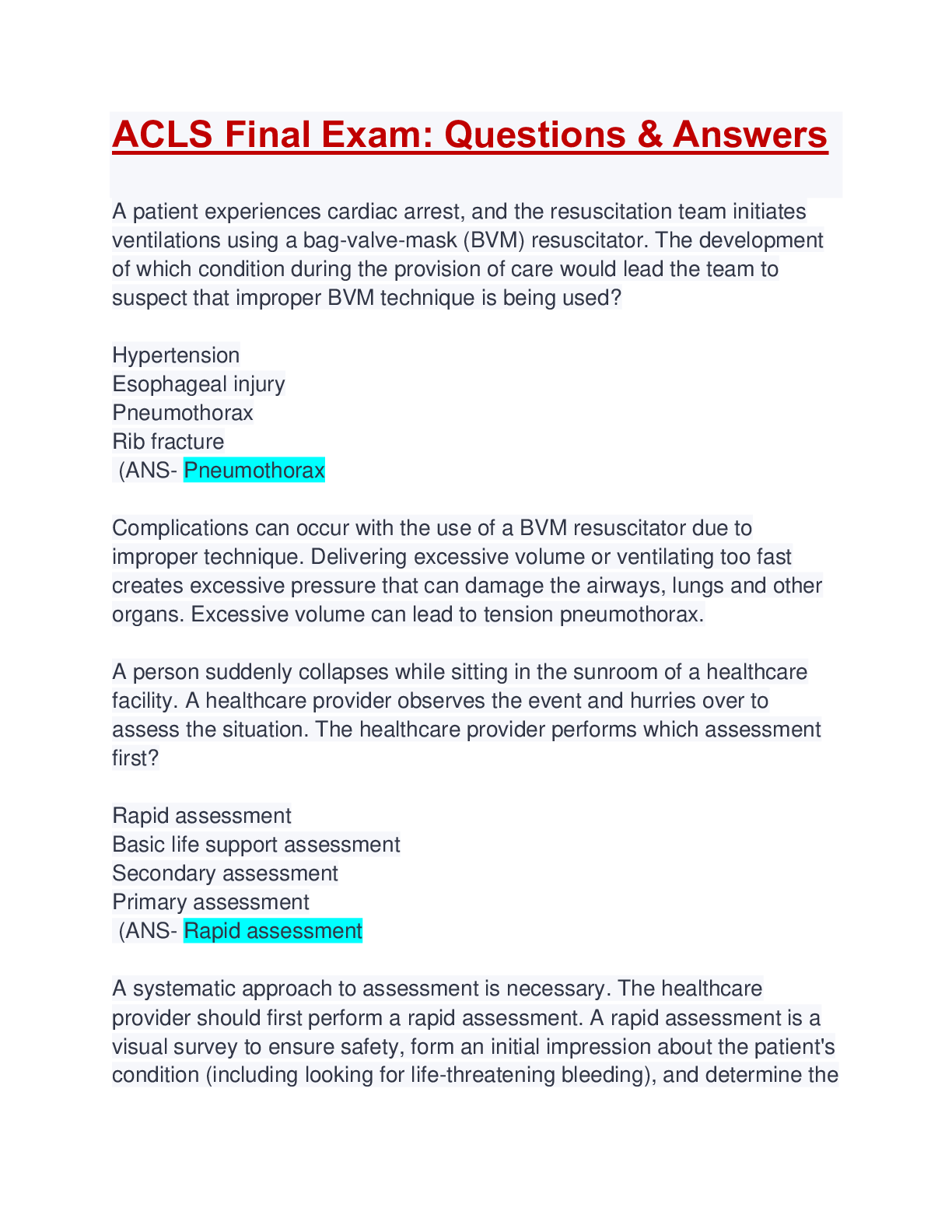
Buy this document to get the full access instantly
Instant Download Access after purchase
Buy NowInstant download
We Accept:

Reviews( 0 )
$9.00
Can't find what you want? Try our AI powered Search
Document information
Connected school, study & course
About the document
Uploaded On
Feb 23, 2023
Number of pages
26
Written in
Additional information
This document has been written for:
Uploaded
Feb 23, 2023
Downloads
0
Views
135



